 alt="Puer Surrounding Counties and Towns: Weekly & Special Local Markets Travel Guide"
/>
alt="Puer Surrounding Counties and Towns: Weekly & Special Local Markets Travel Guide"
/>
Zhaoshutun and Nanmunuona – Narrative Poem of Dai Ethnic Minority in Xishuangbanna
Chinese Name: 西双版纳傣族叙事长诗《召树屯与喃木诺娜》
English Name: Zhaoshutun and Nanmunuona – A Narrative Poem of the Dai Ethnic Minority in Xishuangbanna
Overview
Zhaoshutun and Nanmunuona is a long narrative poem centered around a love story. It tells the tale of Zhaoshutun (召树屯), a prince from the Kingdom of Mengbanjia (勐板加国), and Nanmunuona (喃木诺娜), a princess from the Peacock Kingdom of Mengdongban (勐董板孔雀国). The two meet by the Golden Lake (金湖), fall in love, but their happiness is shattered by war. Despite the trials and tribulations, the prince endures hardships and ultimately rekindles their love.
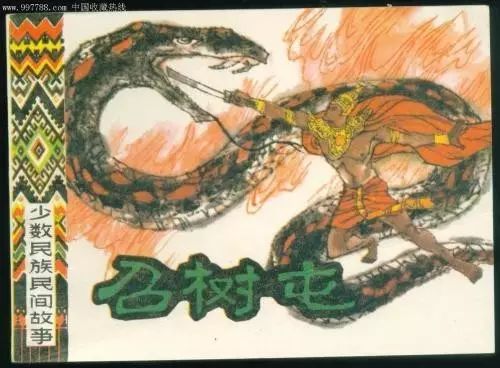
Summary of the Poem
According to legend, in the ancient Kingdom of Mengbanjia, there was a handsome and brave prince named Zhaoshutun (召树屯). After reaching adulthood, he defied his father’s arranged marriage and set out on a journey to find his ideal companion. One day, as he arrived at the scenic Golden Lake (金湖), he encountered seven princesses from the Peacock Kingdom, who had come to bathe. The youngest, Nanmunuona (喃木诺娜), was particularly beautiful and noble, capturing the prince’s heart.
When Zhaoshutun despaired over his unspoken feelings, a divine dragon in the lake revealed the secret to keeping the youngest princess. Taking this advice, Zhaoshutun hid the princess’s peacock feathers while she bathed, preventing her from flying back to her kingdom. Their eyes met, and a spark of love was ignited.
The seven peacock princesses regularly flew to the picturesque Golden Lake to bathe. On one such occasion, as they played in the water, the handsome Prince Zhaoshutun led his entourage into the forest for a hunt. The beauty of the seven princesses, especially the youngest, Nanmunuona, mesmerized the prince, and he immediately fell in love. Just as he was about to serenade her with a love song, the princesses donned their peacock feathers and flew away, leaving the prince in a daze.
At this moment, the divine dragon revealed the secret to keeping Nanmunuona. The next time the princesses came to the lake, Zhaoshutun hid Nanmunuona’s peacock feathers, preventing her from returning to the Peacock Kingdom. He then professed his love to the princess. Impressed by the prince’s handsome appearance and noble demeanor, Nanmunuona fell in love with Zhaoshutun as well.

With the blessings of the people of Mengbanjia, the couple held their wedding. However, their happiness was short-lived as war erupted at the borders. To protect his country, Zhaoshutun led his soldiers to the front lines. Upon his triumphant return, he learned that his wife, Nanmunuona, had been deceived by treacherous ministers and had flown back to the Peacock Kingdom. Heartbroken, Zhaoshutun defied his father’s objections and embarked on a journey to find his princess. After 999 days of searching, with the help of a divine monkey and the divine dragon, he finally reached the Peacock Kingdom and reunited with his beloved princess.
Due to Zhaoshutun’s wise governance, Mengbanjia enjoyed prosperity, with favorable weather and abundant harvests year after year. The people believed that the beautiful and kind Peacock Princess had brought them good fortune. From then on, the Dai people held the peacock in even higher regard, worshipping it as a symbol of happiness and good luck.
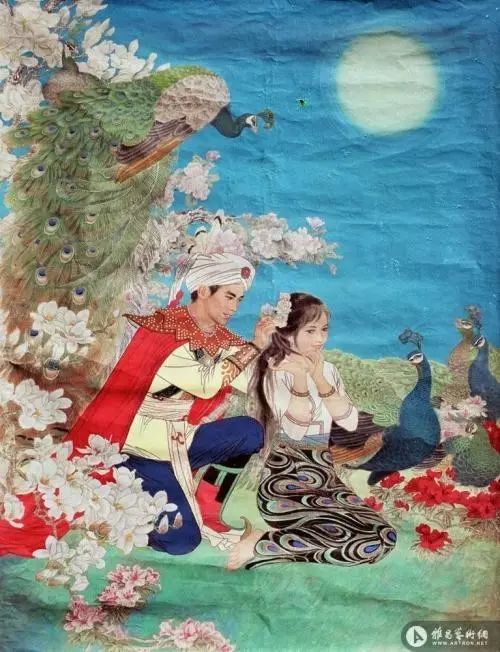
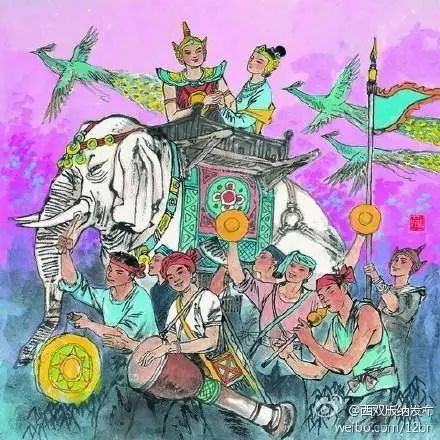
Forms of the Poem’s Transmission
The narrative poem Zhaoshutun is widely spread across Dai communities, existing in both oral and written forms. The oral poetic form is predominantly found in Dai areas such as Yuanjiang (元江), Jinping (金平), and Xinping (新平), where Buddhism had not yet taken root. Written versions in Dai script are mainly circulated in Buddhist-influenced areas like Xishuangbanna (西双版纳), Dehong (德宏), Menglian (孟连), and Jinggu (景谷). Both forms share the same core content, though with some variations in detail.
In regions like Yuanjiang, Jinping, and Xinping, where there are no Buddhist temples or Buddhist scriptures, the oral rendition of the “Peacock Princess” lacks traces of adaptation from Buddhist Jataka tales. This suggests that the story might have evolved from ancient myths. In contrast, the Dai-script manuscripts from areas like Xishuangbanna are likely derived from the Jataka story of Suvannasama, which was later reinterpreted. Exploring further reveals that the bird-goddess tale in Buddhist literature likely originates from even older folk legends.
Thus, another conclusion can be drawn: the original prototype of the Zhaoshutun narrative comes from ancient bird-goddess myths. As ancient southern China and the Southeast Asian region shared a common cultural zone, this story was likely a shared spiritual creation of the ancestors in that cultural region.
Historical Origins
The poem is not only artistically mature but also ideologically healthy. Its growing influence has sparked various debates regarding its origins. Different academic schools propose diverse views:
- External Origin Theory: Suggests that the story’s prototype originated from ancient Indian Sanskrit literature, spread through Southeast Asia, and was later introduced to the Dai regions in China via Buddhism.
- Central Plains Theory: Argues that the story’s prototype stems from the bird-goddess myth prevalent among many ethnic groups in China.
- Indigenous Origin Theory: Proposes that it emerged from ancient Dai bird mythology, dating back to the early primitive society, when the Dai ancestors revered bird totems and created myths about “bird-headed women” and marriages between birds and humans. This served as the original model for the peacock fairy marrying a human.
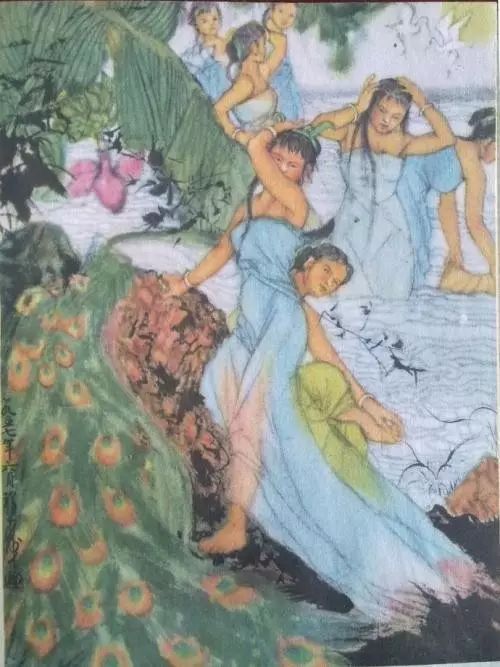
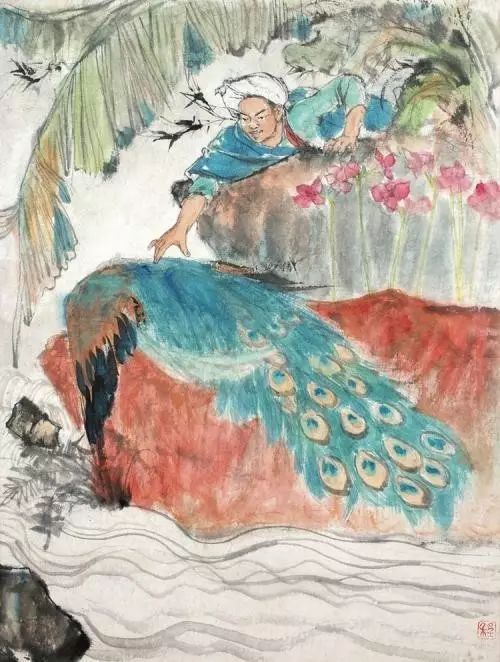
Scholars suggest that in examining the origins of Zhaoshutun, two key questions must be addressed:
- Was the migration of northern tribes to the south the first to occur, or did the spread of Buddhism from the south to the north happen earlier?
- Did ancient folk myths precede the Buddhist Jataka tales, or vice versa?
Historical records indicate that the ancestors of the Dai people primarily originated from the Baiyue tribe (百越族群), which migrated from southern China to the river valleys of Yunnan. Through long-term integration with local indigenous people, the Dai ethnic group was formed. Thus, elements of Baiyue’s primitive culture, such as bird worship, bird totems, and bird-goddess legends, became part of the Dai culture. These elements were likely transmitted during the Baiyue migration more than 3,000 years ago, predating the emergence of Buddhism by over a thousand years. Based on the sequence of historical development, it is inferred that myths such as “bird-human marriage” and “bird-goddess” were first spread by migrating clans from China’s coastal regions to Southeast Asia. Over a thousand years later, these stories were reintroduced to the Dai areas of Yunnan via Buddhism from Southeast Asia.
National Intangible Cultural Heritage
On June 7, 2008, Zhaoshutun and Nanmunuona was approved by the State Council of China and included in the second batch of National Intangible Cultural Heritage.

 7 Days GolfingTour
7 Days GolfingTour
 8 Days Group Tour
8 Days Group Tour
 8 Days Yunnan Tour
8 Days Yunnan Tour
 7 Days Shangri La Hiking
7 Days Shangri La Hiking
 11 Days Yunnan Tour
11 Days Yunnan Tour
 6 Days Yuanyang Terraces
6 Days Yuanyang Terraces
 11 Days Yunnan Tour
11 Days Yunnan Tour
 8 Days South Yunnan
8 Days South Yunnan
 7 Days Tea Tour
7 Days Tea Tour
 8 Days Muslim Tour
8 Days Muslim Tour
 12 Days Self-Driving
12 Days Self-Driving
 4 Days Haba Climbing
4 Days Haba Climbing
 Tiger Leaping Gorge
Tiger Leaping Gorge
 Stone Forest
Stone Forest
 Yunnan-Tibet
Yunnan-Tibet
 Hani Rice Terraces
Hani Rice Terraces
 Kunming
Kunming
 Lijiang
Lijiang
 Shangri-la
Shangri-la
 Dali
Dali
 XishuangBanna
XishuangBanna
 Honghe
Honghe
 Kunming
Kunming
 Lijiang
Lijiang
 Shangri-la
Shangri-la
 Yuanyang Rice Terraces
Yuanyang Rice Terraces
 Nujiang
Nujiang
 XishuangBanna
XishuangBanna
 Spring City Golf
Spring City Golf
 Snow Mountain Golf
Snow Mountain Golf
 Stone Mountain Golf
Stone Mountain Golf













 What Our Customers Say?
What Our Customers Say?
